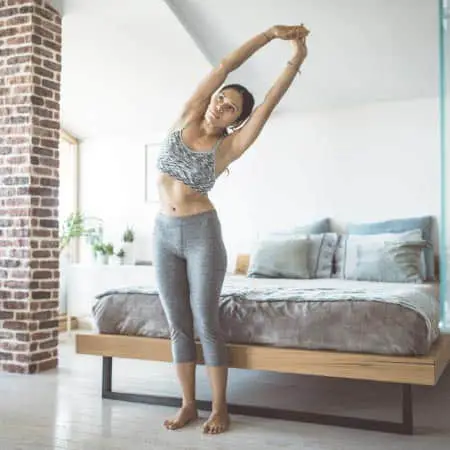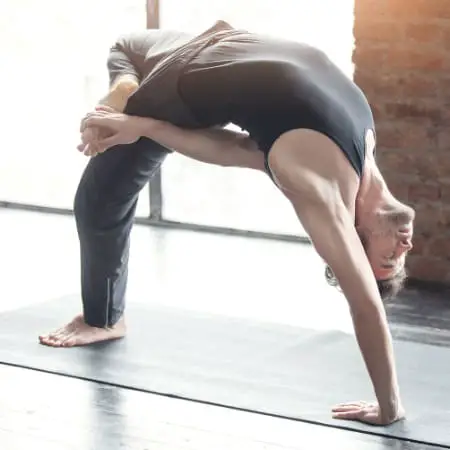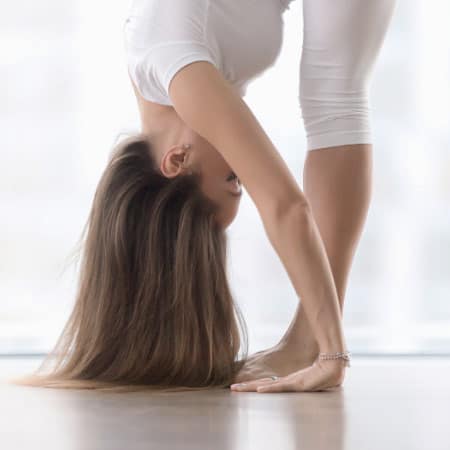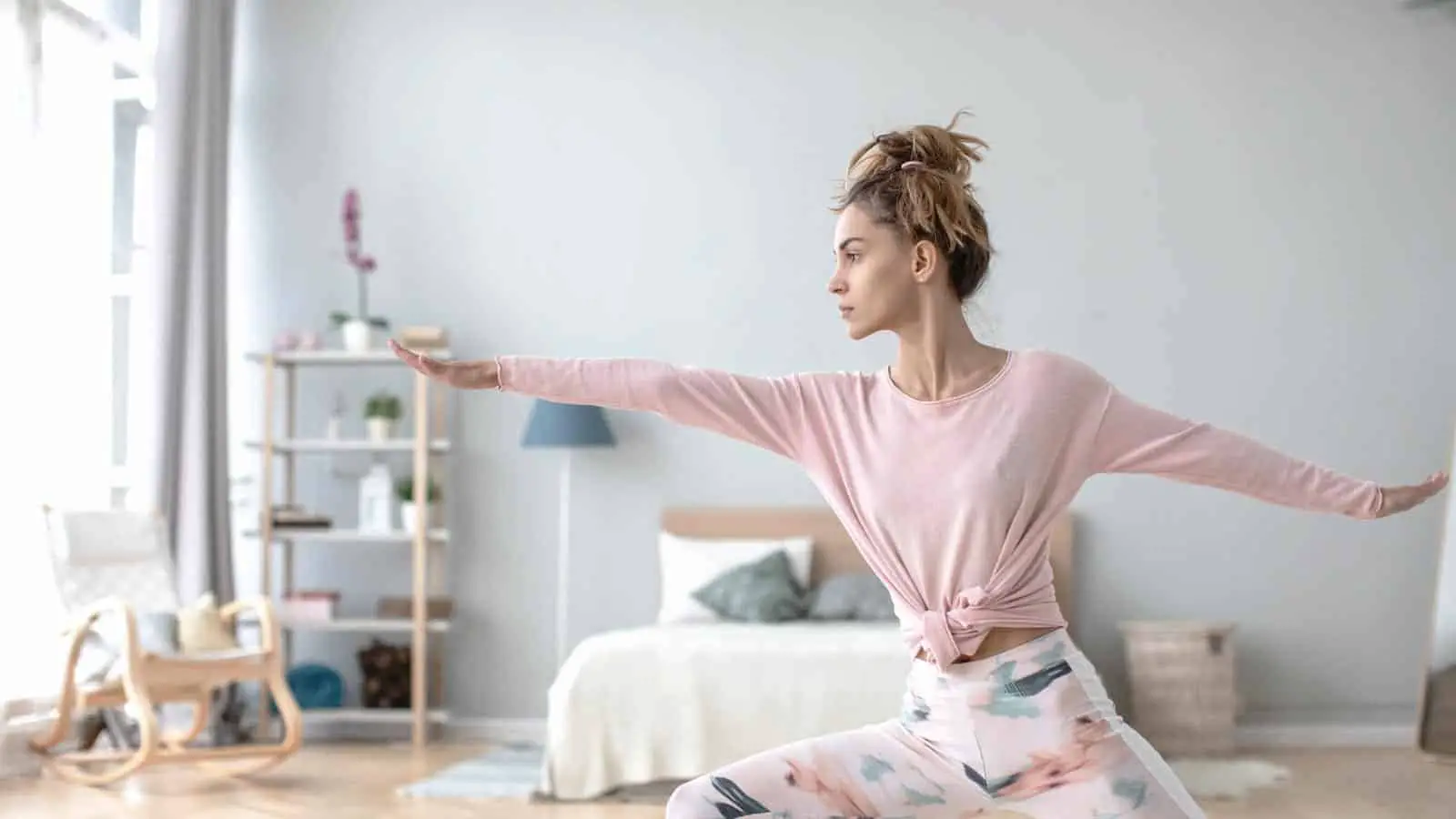If you find yourself ready to roll out your mat and try yoga for the first time, you may be wondering how often is appropriate to practice as you are just getting started. With all the online buzz about 30-day yoga challenges and other similar campaigns to kickstart a yoga practice, you might be wondering if you can join in and start practicing every day, even as a newbie.
You can do yoga everyday as a beginner, and you can experience the many benefits of this type of practice. As long as you take time to listen and gently respond to your body, even as a new yogi, you can do yoga daily and fully enjoy its benefits.
Let’s look at some tips and tricks for a brand new yogi to keep in mind as they begin their yoga journey. We will explore some key ideas to keep in mind as you begin your daily practice. We will also see what benefits you may begin to experience, as well as see a few beginner’s poses to help you get started.
Getting Started With a Yoga Practice
If you are looking to practice yoga everyday, you are setting an excellent foundation for a sustainable, beneficial habit. However, some people who start any habit overly enthusiastically find it is not sustainable in the long run. So, in order to get started in a balanced way, consider how long you can reasonably commit to your practice each day.
Yoga everyday: Start Slow and Grow
Although how long you will want to practice will depend on your personal preferences. Don’t be afraid of starting small and growing over time. Even just by practicing 10-20 minutes each day, you will begin to experience the benefits yoga offers and notice changes in your body and mind.
It’s great if you are able to commit to more time as this will grow your practice more deeply. However, it is better to create a habit that will be sustainable and practical in the long term rather than one that starts off intensely but is quickly dropped.
As you get started with your 10 to 20 minute daily practice, you can begin to incorporate a few longer sessions each week if you wish. For example, if you are building the habit of a daily 15-minute session, you may consider doing a 30- to 40-minute practice once or twice a week on days you are feeling energetic.
You will be able to experience how different lengths of yoga make you feel, and you will have a first-hand sense of the benefits they bring to your life.
Intrinsic Motivation
By growing your practice slowly and taking time to observe the benefits it is bringing you concretely, you will be more intrinsically motivated to continue your yoga practice. Because you have a clear understanding of how the practice is positively affecting your life, it will become easier and easier to stick with your routine since its value is undeniable.
Listen to Your Body

If you try to do too much too fast every day, you will not give yourself a chance to get to know your body. Better body awareness comes as you grow your practice, and with this comes the ability to understand what your body is trying to tell you. It will let you know if you are pushing too hard, and it is important to have the body awareness that lets you take in these messages and respond accordingly.
It is important never to push too far when it comes to asana practice, as this is a common way to get injured. It is also one of the great lessons of yoga: to be patient and let the poses come in time. There is no need to physically push yourself too far, as you will slowly achieve different postures when your body is ready in its own time.
In-Person and At-Home Practice
Balancing an at-home practice with in-person sessions is important for beginners as well. At home, you can spend your time however you want. If you want to move more slowly, linger in a particular pose, or spend extra time in savasana, all of these options are available to you. Your at-home yoga practice is a beautiful opportunity to get to know your body and develop greater body awareness at your own pace.
The benefits of an in-person class are also important for a beginner. As a beginner, you must learn the postures correctly, and teachers can help you get your alignment just right. The sooner you know how to practice the pose accurately, the better you will be able to explore your body and its way of movement.
Practicing in an environment with others is also a collective energetic experience that can help you find your physical edge more easily than you would at home. With a room full of people breathing deeply and energetically moving together, you might find yourself deepening your postures in ways you do not do at home. This experience is important for you to be able to explore where your edge is in a particular pose.
Try Different Types of Yoga
To effectively practice yoga every day, you may consider varying the types of yoga you are doing. This variety gives your body a chance to recover on some days while taking advantage of a higher energy level on other days. You can try out restorative, yin yoga classes on days you want to help your body heal, while you might try out a vinyasa flow class on a day you want to feel the energy flowing through you.
Top 5 Benefits of a Daily Practice
It’s no secret that practicing yoga has immense benefits, some of which modern science is able to study and others that yogis simply know to be true. From the physical to spiritual benefits, there are many reasons to start a daily yoga practice. Let’s see some of the top benefits here.
Gets Your Blood Flowing
Even after moving through just a few asanas, you will have improved the blood flow and circulation around your body. Different movements and positions benefit your blood flow and circulation. For example, after spending some time in a headstand, you will undoubtedly be able to feel the effect an inverted position has on your body.
Getting the blood moving around the body in ways it isn’t accustomed to is beneficial because it allows it to become reoxygenated. This means your blood will be able to more effectively and carry oxygen around to the places it’s needed in your body. This can feel like a rush of energy, especially if you feel sluggish before stepping onto the mat.
Better Flexibility Means Better Joints

It’s no secret that practicing yoga everyday will open your body in ways that at one time seemed impossible. The gradual deepening of your practice will show up in many ways, one of which is greater flexibility and more openness in your joints. This isn’t just exciting because it allows you to do poses you once were unable to do– it is exciting because it has a profound effect on your overall joint health.
If you are not developing flexibility and have tight joints, you may start to feel aches and pains elsewhere in your body. Usually, knee pain and back pain can be traced elsewhere in your body. Developing flexibility in your hips will help your knees, as developing flexibility in your hamstrings can help your back.
Build Muscle in a Balanced Way
Adding muscle slowly and in a balanced way is incredibly beneficial to the body. Yoga postures allow you to strengthen your muscles holistically. If you are doing strength training at the gym, you have to be mindful of what kind of exercises you are doing to develop your muscles in a balanced way. However, by working through yoga flows, you will naturally strengthen your whole body.
The positions in yoga that build strength are also beneficial for your bone health. As you move through postures where you must support your own weight, you will be strengthening your muscles as well as your bones. This is a great preventative measure to take against osteoporosis.
Calm the Adrenal Glands
Our adrenal glands are responsible for producing cortisol, also known as the stress hormone. While evolutionarily, this hormone had a vital survival function, its role has changed in the modern world. Nowadays, prolonged overproduction of cortisol can contribute to a variety of mental health struggles as well as physical problems.
When you step on to the mat and do your yoga practice, you can lower your cortisol levels. This not only is beneficial in terms of feeling calmer and less anxious, but it also impacts the body in more subtle ways. It can help your immune system function as it should and keep you from eating unnecessarily as a response to emotions.
Release Accumulated Tension and Emotion
Even if it is your very first time on the mat, you may have the experience of feeling tension or emotion being released from your body. It might be a sweet sigh coming out of some twisting posture or a few tears springing to your eyes in a deep hip opener. These are all very common experiences among yogis, as tension and emotion get stuck in our bodies and need a way to find their way out.
As you continue your practice, you will give your body a regular chance to release these accumulations in a healthy and transformative way. By doing this physical and emotional upkeep, you may experience fewer unexpected bursts of anger or sadness in your daily life. We all experience a range of emotions, and developing good habits to release the ones that no longer serve us is a deeply beneficial by-product of asana practice.
5 Go-To Poses for Beginners
If you like the sound of these benefits and can’t wait to begin, we have a few poses to get you started. Here are five simple poses that you can turn to whenever you have a moment to show up for yourself and do something deeply beneficial for your body. These are all suitable for beginners and will soon become a regular part of your practice.
Mountain Pose (Tadasana)
This standing pose is both simple to do and full of potential benefits. It can help guide you to better posture as well as help you find your center and improve your balance. It will lightly tone and strengthen muscles throughout your body, including your core, back body, and arms.
This is a pose you will often return to during various yoga sequences. Feeling comfortable in this posture and using it as a grounding exercise to find your breath makes it a precious addition to your yoga practice.
Forward Fold (Uttanasana)

This standing forward fold is a beautiful posture that gives your back body a wonderful opportunity to stretch out completely. This isn’t just referring to the muscles of the actual back, but of the whole area from your heels, up the back of your legs, across your back, neck, and head, and ending at your eyebrows.
Folding into Uttanasana is a way to engage this whole area of your body. Keep in mind the key to this stretch is the movement in your pelvis. It’s from there you should be tilting forward. Engage with your whole body and avoid making this stretch simply about your fingers reaching your toes.
Besides the amazing stretch, you will experience in this pose, it also helps calm the mind and offer an antidote to headaches. Breathing deeply here can help increase the digestive fire and help your digestive system improve its functioning.
Downward Facing Dog (Adho Mukha Svanasana)
This inverted posture is one that will certainly get the blood flowing. By engaging in this position, not only will your blood circulation begin to improve, but you will be offering a chance for your spine, neck, and shoulders to stretch out and release tension. This posture also helps build strength in your wrists and hands as they help support your body’s weight.
This is one of the most prominent positions in yoga, and for a good reason. It is not only a way to stretch out and strengthen key areas of your body, but it also serves as a resting posture as you work through different yoga flows. Becoming comfortable in downward dog and using it as a chance to deeply connect with your breath will serve you well as you go forward with your yoga practice.
Cobra Pose (Bhujangasana)
Cobra Pose is one of the first backbends for beginning yoga students. While there are many more intensive backbends waiting for you as you deepen your practice, you will come back to this one again and again as you work through sun salutations and begin warming up for your practice.
By practicing Cobra, you will give the spine a chance to both strengthen and become more flexible. As you practice this bend, you will be opening your chest and shoulders while allowing your lungs to expand as well. It will also be working on the inside, gently massaging and stimulating the organs you can find in your abdominal region.
Cat-Cow Pose (Chakravakasana)
The Cat-Cow movement is a wonderful movement that allows you to warm up the body and bring more flexibility to your spine. It is a simple and gentle pose that you can adjust to give your body exactly what it needs. While this pose will feel great in terms of stretching and opening up around your spine, it has many internal benefits as well.
Practicing cat-cow will stimulate your adrenal glands, which, as we discussed earlier, has a direct impact on your cortisol levels. By stimulating these glands, you can reduce cortisol levels and feel calmer and more at ease. It also helps to stimulate your internal organs as well as help with blood-sugar regulation in the pancreas.
Additional Tips for the New Yogi
If you are walking into your very first yoga class, you might have a slight feeling of nervousness that comes anytime you are trying something you’ve never done before. Not to worry, yoga helps build compassion, and you are likely walking into a kind and accepting space. To help you feel more comfortable starting your journey, here are a few tips that might help you get started.
Yoga diet
Try to avoid any substantial meals at least 2-3 hours before your class begins. It is best to do yoga on an empty stomach and enjoy a meal after class. This is when your digestive fire is strong and has the best ability to break down a larger meal. If you must eat something, consider a bit of fruit since it will digest more quickly and not cause you much discomfort during class.
Remember to drink plenty of water after class and eat a balanced and nurturing meal after your practice.
What You Need to Get Started
Usually, yoga studios will have most everything you need, such as mats and blocks, available for use during class. Some people prefer to bring their own mats, and you can do this if you have one. Simply put on some comfortable clothes you will be able to move easily in, and you will be ready for your first class.
Final Thoughts
Doing yoga every day, even as a beginner, is a sure way to transform your life. You will be able to have a direct experience of the myriad of benefits yoga has to offer. By practicing every day, you will see and feel your body transform, and most likely, you will notice a shift in your mindset and mental health. Listen to your body, give it what it needs without pushing, and enjoy the many benefits yoga has to offer.








